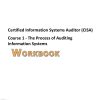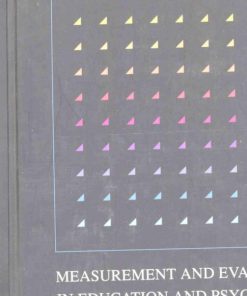APA Style Simplified Writing in Psychology Education Nursing and Sociology 1st Edition by Bernard Beines 0470671238 9780470671238
$50.00 Original price was: $50.00.$25.00Current price is: $25.00.
Authors:Bernard C. Beins , Author sort:Beins, Bernard C. , Published:Published:Feb 2012
APA Style Simplified Writing in Psychology Education Nursing and Sociology 1st Edition by Bernard Beines – Ebook PDF Instant Download/Delivery. 0470671238, 9780470671238
Full download APA Style Simplified Writing in Psychology Education Nursing and Sociology 1st Edition after payment

Product details:
ISBN 10: 0470671238
ISBN 13: 9780470671238
Author: Bernard C. Beines
This is a compact but comprehensive guide to writing clearly and effectively in APA style.
- Demonstrates how to write objective scientific research papers using interesting prose
- Incorporates guidelines from the 6th edition of the APA publication manual
- Explores how to develop ideas, connect them to what others have written, and express them clearly
- Discusses the differences between written, oral, and poster presentations and offers instructions for applying APA style to each
APA Style Simplified Writing in Psychology Education Nursing and Sociology 1st Table of contents:
1 Writing Professionally
How Does Professional Writing Differ From Other Kinds of Writing?
Using APA Style
Table 1.1 Typical Sections in an APA-Style Research Report
Making a Credible Argument
Different Types of Communication
Written Communication
Oral Communication
Poster Presentations
Internet Publishing
Effective Communication
Establishing Good Writing Habits
Ethical Writing
Figure 1.1 Avoiding plagiarism.
Figure 1.2 How plagiarism has been avoided.
Scholarly Excerpt
Attempted Paraphrase
Paraphrase Rewrite
2 Elements of Style
Recognizing the Importance of Good Grammar and Style
Choosing Effective Wording
Table 2.1 Transitions and Their Uses
Using Inclusive and Appropriate Language
Deciding on the Use of Technical Language
Avoiding Common Problems
Apostrophe Use
Table 2.2 Apostrophe Dos and Don’ts When Indicating Possession
Table 2.3 Frequently Misused Contractions
Pronoun Use
Table 2.4 Pronouns and Agreement in Number
Table 2.5 Pronouns and Antecedent References
Verb Forms
Table 2.6 Active and Passive Verbs
Spelling
Table 2.7 Rules for Forming Plurals
Specific Word Use
Table 2.8 Specific Word Use in APA Style
3 The Introduction Section
Introducing the Topic
Different Approaches to Starting the Introduction
Citing an Actual Event
Creating a Fictional Scenario
Making a Compelling Statement About an Important Issue
Identifying the Scope of Previous Research
Presenting a Statistic
Citing a Quotation
Describing Common Occurrences
How to Begin
Reviewing the Literature
Reasons for Reviewing the Literature
Clarifying Terms in the Research
Introducing Your Research: Generating a Hypothesis
4 The Method Section
Participants and Subjects
Human Participants
Table 4.1 Demographics of Research Participants
Box 4.1 Participant Descriptions From Journal Articles Involving People
Confidentiality of Participants
Nonhuman Subjects
Attrition
Box 4.2 Examples of Descriptions of Subjects in Research Involving Nonhuman Animals
Materials and Apparatus
Box 4.3 Examples of Details of Materials in Published Research Articles
Box 4.4 Examples of Details of Apparatus in Published Research Articles
Procedure
Design
Table 4.2 Common Elements in the Design Subsection
5 Communicating Statistics
Why Do We Use Statistics?
What Point Are You Trying to Make?
Understanding Your Numbers
Table 5.1 Examples of Text With and Without Statistical Information Each version should communicate the same basic information; the numbers should not be necessary for the reader to understand your message.
Table 5.2 Common Research Questions and the Traditional Statistical Tests Associated With Them Each type of test has variations that are appropriate for different circumstances. You can refer to statistics and research methods books for details on appropriate use of these tests.
Helping Readers Understand Your Statistics
Figure 5.1 An illustration of (a) a graph with uninformative gridlines that clutter the figure and bars with a moiré effect that Tufte (1983) asserts will distract the reader, and (b) a graph with a less cluttered, more easily comprehensible format.
Differentiating Results and Interpretations
6 The Results Section
Your Hypothesis
Table 6.1 Examples of Presentations of Descriptive Statistics
Deciding What to Present
Reporting Significant and Nonsignificant Results
Marginally Significant Effects
APA Style and Presentation of Your Results
Table 6.2 Format for Presenting Commonly Used Inferential Statistics
Table 6.3 Some Common Symbols and Abbreviations Used in Measurement
Table 6.4 Some Common Symbols Used in Presenting the Results of Statistical Tests
Creating Tables
Figure 6.1 Illustration of a basic table of data in APA style.
Figure 6.2 Example of a table in which different measurements (means and standard deviations) appear separately. This format is fairly rare in published articles.
Figure 6.3 Example of a table of correlations in APA style.
Table 6.5 Creating a Table with Word®
Table 6.6 The Result: Means (and Standard Deviations) of Ratings of Jokes According to Sex of Joke Victim and Sex of Participant. Marginal Means in Parentheses Reflect Overall Group Means
Creating Figures
Figure 6.4 Graph with labels of common elements of the graph. This is a bar graph, but the same general principles hold for any graph, such as line graphs, showing comparisons across groups. Line graphs are appropriate when the variable on the X-axis is quantitative. In your manuscript, the figure caption appears below the figure. The figure caption should include any explanatory information needed to understand the graph. In preparing a manuscript, you would place the caption and the figure on their own separate page, one caption and figure to a page.
Figure 6.5 A line graph showing the extent of mirth expressions like laughing and smiling as a function of mood of research participants. Note that the Y-axis starts with the value of zero.
Figure 6.6 Line graph in APA style. Normally, the Y-axis begins with zero. When it does not, the results may be deceptive. In this graph, the data are the same as those in Figure 6.5, but the differences across conditions on the X-axis seem greater because of the change of the scale of the Y-axis. Figures do not generally use notes the way tables do.
Figure 6.7 Scatter diagram in APA style showing the relation between temperature and teen birth rates in the states in the US and example of a figure caption. A scatter diagram is appropriate for showing the pattern of individual cases measured on two different variables. In this example, there is a significant positive correlation, reflecting the fact that as the temperature increases, so does the teen pregnancy rate. Because this relation is correlational, however, you cannot draw any conclusions about cause and effect.
Figure 6.8 Illustration of a frequency histogram in which the categories fall on a continuum. In this case, the categories are ratings that progress from 1 to 7. In such a histogram, the bars should touch one another.
Figure 6.9 Illustration of a frequency histogram with discrete (nonquantitative) categories on the X-axis. When the categories are discrete, the bars should not touch.
The Connection Between the Text and the Tables and Figures
The Difference Between Results and Discussion Sections
Some Final Points About Presenting Results
Table 6.7 Specific Rules and Guidelines Commonly Used for Presenting Numbers and Statistics in APA Style
7 The Discussion Section
Summarizing Your Results
Box 7.1 Examples of Approaches to Starting the Discussion Section
Connecting Different Aspects of Your Results
Dealing With Nonsignificant Results
Comparing Your Results With Those of Others
Box 7.2 Examples of Connections Between Current and Previous Research
Stating the Importance and Implications of Your Results
Acknowledging the Limitations of Your Study
8 References: Citations in the Text and the Reference List
Citing References in the Text
Citing One or Two Authors
Citing Sources With Three to Five Authors
Citing Sources With Six or More Authors
Citing Personal Communications
Citing Multiple Sources Within Parentheses
Order of Citations in the Reference List
Using Your Word-Processing Program to Create the Citation
Using Word® to create a hanging indent
Examples of How Different Types of References Should Be Laid Out
Articles in Periodicals
References Involving Books
References to Newsletters
Internet References
Reference to an Encyclopedia Entry
References to Presentations
9 Final Touches: The Abstract and Formatting Details
The Abstract
Figure 9.1 Format of the Abstract.
Formatting Your Manuscript
Title Page
Figure 9.2 Format of the title page. (In a manuscript submitted to a journal, notes on the title page include (a) departmental affiliation of authors, (b) changes in affiliation since the research was done, (c) acknowledgments of assistance, and (d) contact information for the authors. These may not be required for course-related manuscripts. Each of the four notes is in a separate paragraph.)
Table 9.1 Creating the Page Header and Page Number in Word®
Appendixes
Footnotes and Notes
Order of Manuscript Pages
Section Headings
Table 9.2 Different Levels of Headings in an APA-style Manuscript
Figure 9.3 Headings for manuscripts with two levels of headings.
Figure 9.4 Headings for a manuscript with three levels of headings.
Figure 9.5 Levels of headings for multiexperiment manuscripts and for manuscripts with all five levels of headings.
Miscellaneous Formatting Details
Table 9.3 Capitalization in APA Style
Table 9.4 Italics in APA Style
Table 9.5 Abbreviations in APA Style
Table 9.6 Creating Series in APA Style
Table 9.7 Using Quotations in APA Style
Figure 9.6 Illustration of format of short quotations of 40 words or fewer.
Figure 9.7 Illustration of format of long quotations of 40 words or more. The quotation is indented in its entirety. The first part of the quotation is not indented, but subsequent paragraphs in the quotation are indented.
Table 9.8 Using Common Punctuation Marks
10 Creating Poster Presentations
Differentiating Visual and Written Communication
Reducing the Amount of Information
Visual Style
Figure 10.1 Example of a single-sheet poster for presentation at a conference.
Figure 10.2 Potential layout of a poster using multiple sheets of paper.
Figure 10.3 Potential layout of a poster using multiple sheets of paper and a banner title.
Your Behavior: The Ethic of a Poster Session
Attire
Covering Your Poster
Creating Your Poster Using PowerPoint®
Table 10.1 Initial steps for Creating a Large, Single-Sheet Poster Presentation Using PowerPoint®
Table 10.2 Steps for Creating a PowerPoint® Poster Either on a Single, Large Sheet or on Multiple Sheets
11 Giving Oral Presentations
The Difference Between Oral and Written English
Table 11.1 Guidelines for Presentation Material
Adapting APA Style to Oral Presentations
Preparing for Your Talk
Table 11.2 Creating Your Presentation
Creating Graphics for Your Presentation
Giving the Presentation
Table 11.3 Preparations at the Conference
12 Sharing Your Work Electronically
New Capabilities in Electronic Sharing
Using a Word Processor to Create Manuscripts for the Internet
Table 12.1 Saving a Word® Manuscript in a Format for Internet Publishing
Creating Hyperlinks
Table 12.2 Creating a Hyperlink to an Internet Location Outside Your Own Web Document
Table 12.3 Creating a Hyperlink to a Location Within Your Own Web Document Using Word®
Inserting Images
Advantages of Internet Publishing Software
Table 12.4 Useful Features of Internet Publishing Software That Are Not as Easy or are Impossible with Word Processors
Publishing Your Poster on the Web
Uploading Your Manuscript to the Internet
Revisiting the Concept of Plagiarism
Back Matter
Appendix A Example of APA-Style Manuscript with Common Errors
Appendix B Corrected APA-Style Manuscript
References
Name Index
Subject Index
People also search for APA Style Simplified Writing in Psychology Education Nursing and Sociology 1st:
apa format psychology paper example
writing apa style research paper
what is apa style writing
is apa scientific












